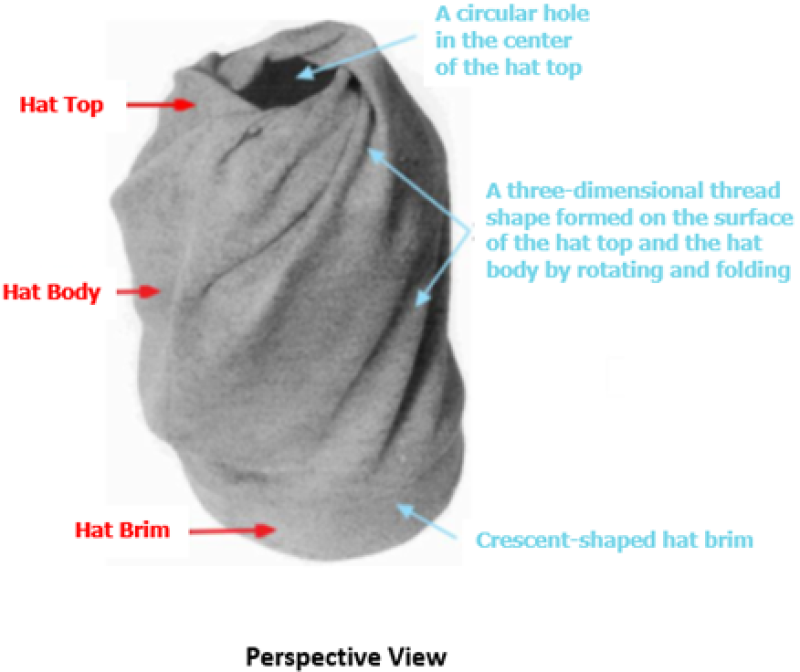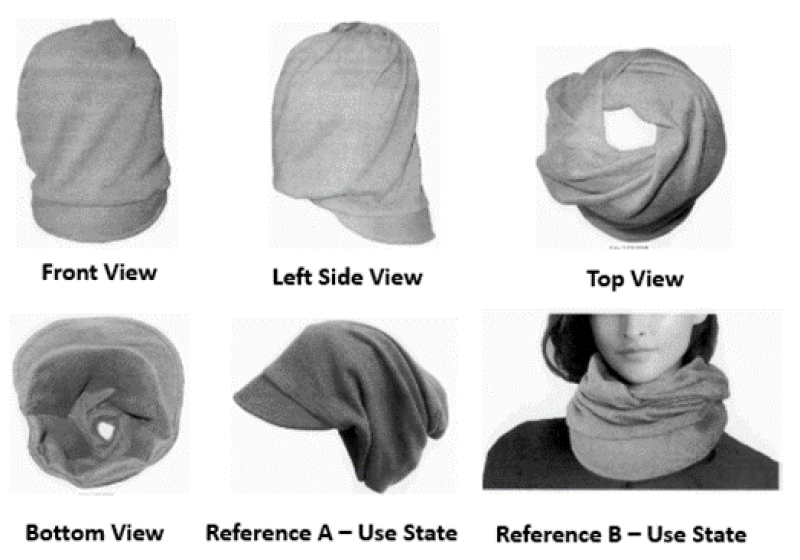‘New design’, as referred to in the Taiwan Patent Act, means any novel design created with respect to the shape, pattern or colour of a portion of an, or an entire, article, or any combination thereof, thereby creating an appealing aesthetic effect. However, if the configuration of an article is purely dictated by its function, the article shall be excluded from design patent protection. For instance, the threads of a screw and a nut, the key slots of a lock, and the grooves of a key are statutorily unpatentable.
Taiwan’s Intellectual Property and Commercial Court has recently rendered its opinion in a design patent infringement lawsuit regarding whether the features of a design patent are purely functional.
Background to the case
The design patent in question is a scarf-hat. This soft scarf-hat, in its entirety, is substantially in the form of a hollow arcuate rectangular body. It has, from top to bottom, three parts: the hat top, the hat body, and the hat brim. There is a circular hole in the centre of the hat top, the perimeter of which extends downward to connect with the hat body, and a three-dimensional thread shape is formed on the surface of the hat top and the hat body by rotating and folding. The bottom of the hat body extends forward on one side to form a crescent-shaped hat brim, and a fold strip is provided at the seam between the hat body and the hat brim.


The Intellectual Property and Commercial Court's ruling
The court held that if a design is entirely dictated by functional considerations and there is no creative leeway to design its appearance, the design shall be considered purely functional. Moreover, if the design of an article is solely determined by the basic shape of a part that must inevitably fit with another commonly known article, and if the overall design is simply the result of attaching or assembling another commonly known article, with no creative ideas incorporated, the design shall be regarded as purely functional and cannot be granted a design patent.
Although the design patent in question functions both as a hat and a scarf, its overall appearance, as illustrated in the drawings submitted when filing the design application, does not have any features that are created to conform to the shape of another commonly known hat or scarf. In other words, the overall design is not an inevitable result of attaching or assembling another commonly known article.
Moreover, although the evidential materials submitted by the defendant were sufficient to support that the design patent in question has the function of a scarf and a hat, the designs illustrated in the evidential materials submitted by the defendant respectively exhibited distinct aesthetical feature and shape, proving that the design patent in question is not created purely due to functional considerations that result in a necessary basic shape.
Final thoughts
As evident from the above ruling, if the design of an article is not solely determined by the basic shape of a part that must inevitably fit with another commonly known article, and if there is a space to create a design which varies from the basic shape of an article, it would be reasonable for the design patent owner to aver that the design is not purely functional.
If this argumentation is supplemented with examples of other designs in different shapes or configurations but that have the same, or a similar, function, the design patent owner would be in a better position to argue that the design patent is not purely functional.












